How To Grow Begonia Maculata (The Polka-Dot Begonia)
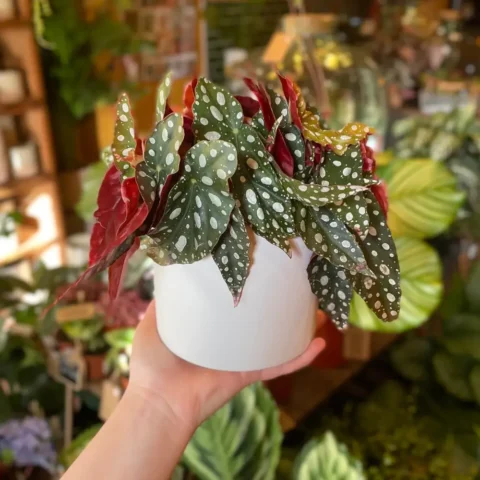
Introduction
If you’re wondering how to grow Begonia Maculata successfully, you’re in the right place. Begonia Maculata, commonly known as the Polka Dot Begonia, is a captivating and ornamental plant that has gained popularity among plant enthusiasts for its striking appearance and relatively easy care. This stunning begonia species is characterized by its unique asymmetrical leaves adorned with silver polka dots, creating an eye-catching contrast against its deep green backdrop. As a favorite among indoor plant lovers, Begonia Maculata adds a touch of elegance to any living space.
Learning how to grow Begonia Maculata involves providing the right conditions, including proper light, humidity, and watering. With its distinctive foliage and charming aesthetics, discovering the secrets of how to grow Begonia Maculata can be a rewarding journey for both novice and experienced plant enthusiasts alike. Let’s delve into the steps and tips that will help you cultivate a thriving Begonia Maculata in your own home.
Begonia Maculata is native to the rainforests of Brazil. In its natural habitat, it thrives in the warm and humid conditions of the South American rainforests. The species is well-adapted to the dappled sunlight and consistent moisture found in these environments. As a houseplant, replicating these conditions, such as providing indirect sunlight and maintaining appropriate humidity levels, contributes to the successful cultivation of Begonia Maculata.
Begonia Maculata Varieties
Listing all varieties of begonias and their names is an extensive task, as there are thousands of species and cultivars within the begonia genus. However, I can provide an overview of some popular types and categories:
Tuberous Begonias
Tuberous Begonias, prized for vibrant flowers and tuberous roots, bring bursts of color to gardens. With varieties like Nonstop, Pendula, and Picotee, these beauties thrive in partial shade, showcasing continuous blooms from spring to fall.
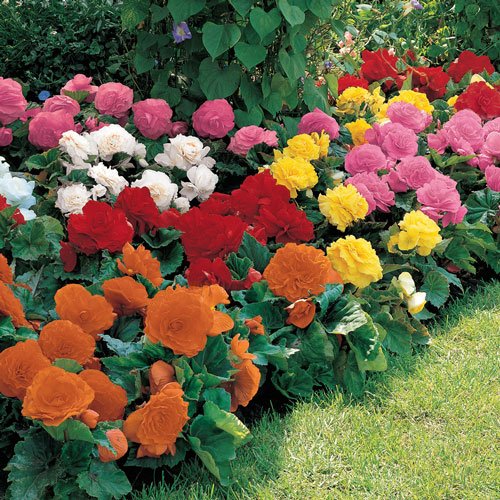
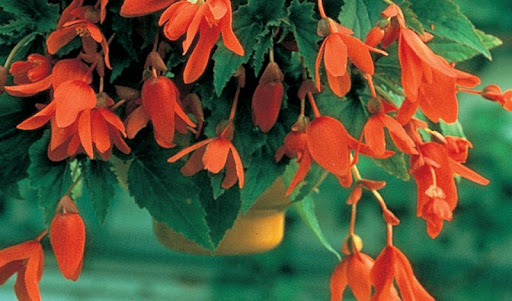
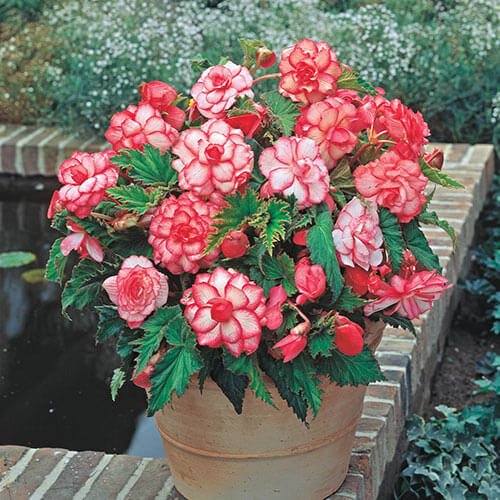
Cane or Angel Wing Begonias
Cane or Angel Wing Begonias, featuring tall stems and distinctive wing-shaped leaves, are beloved for their elegant appearance. With varieties like Begonia coccinea, Begonia ‘Lucerna’, and ‘Angel Wing,’ these begonias often display clusters of drooping flowers. Adaptable and graceful, they add a touch of sophistication to gardens and indoor spaces.
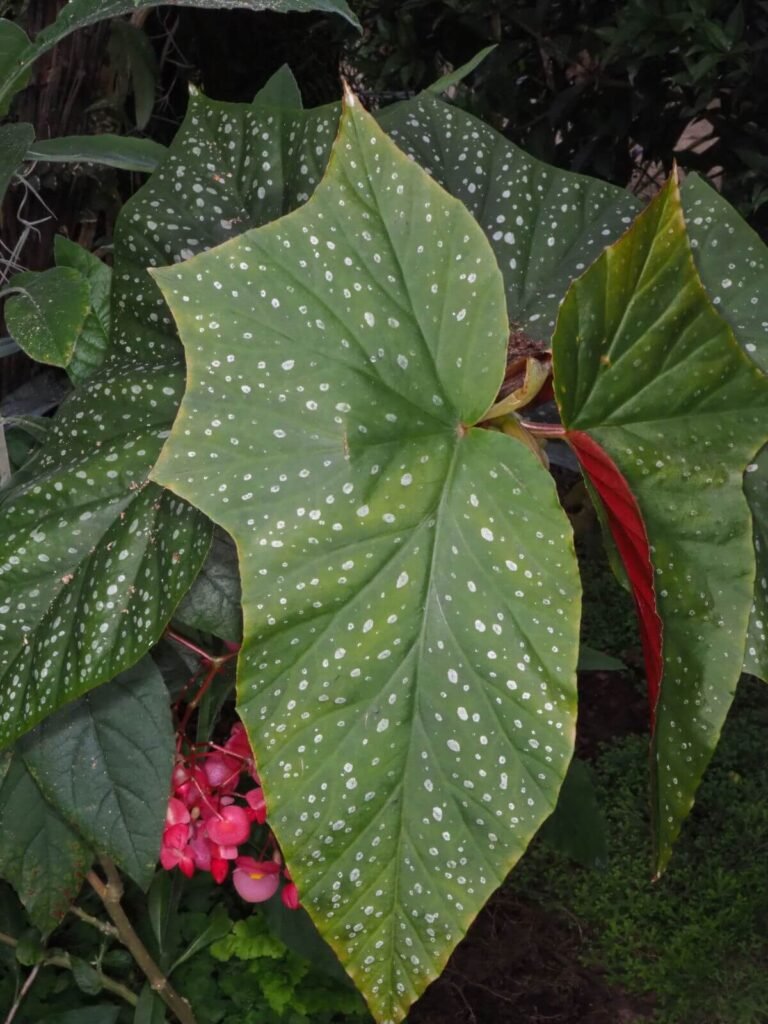
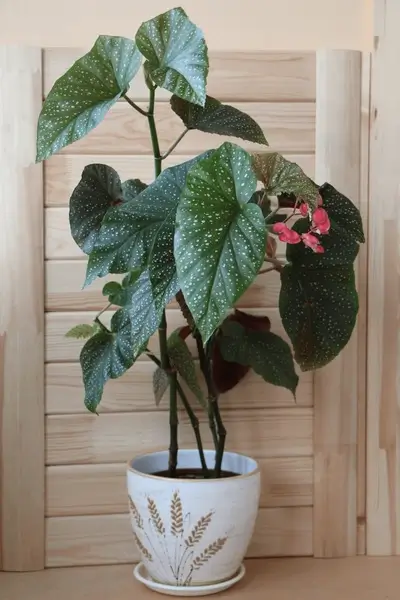
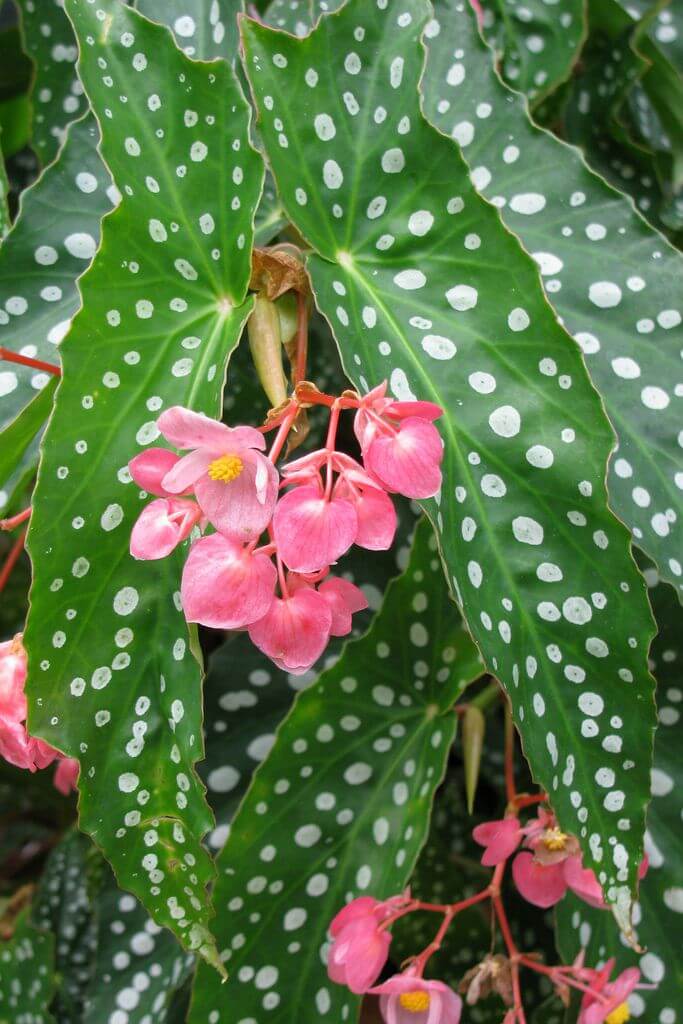
Rex Begonias
Rex Begonias, prized for their captivating foliage, showcases intricate patterns and vibrant colors. With varieties like Begonia rex-cultorum, ‘Escargot’ and ‘Fireflush,’ these begonias are grown for their unique leaves rather than their flowers. Adaptable to indoor environments, they add a touch of exotic beauty to any collection.
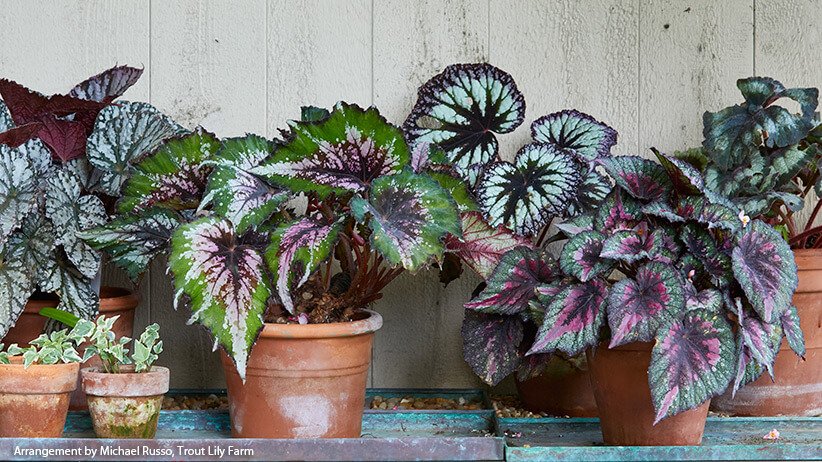
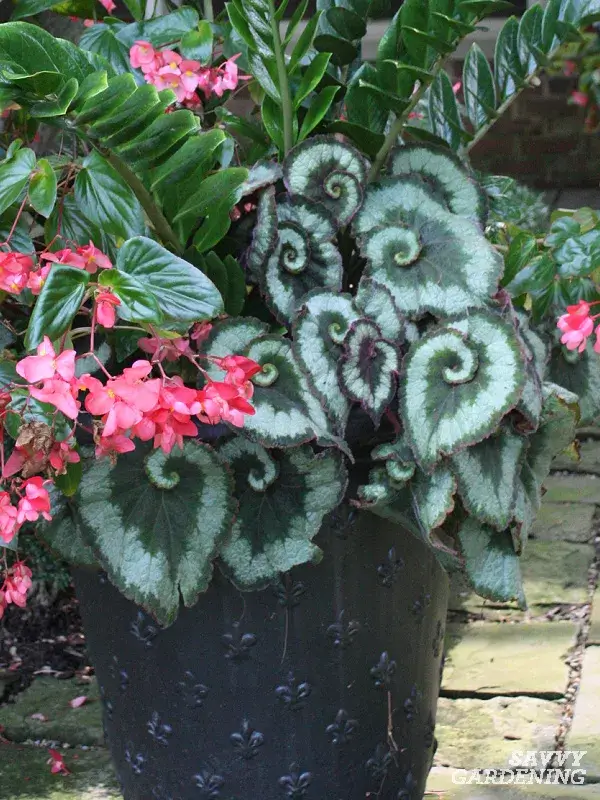
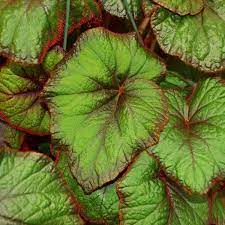
Fibrous-rooted Begonias
Fibrous-rooted Begonias, including Wax Begonias and ‘Dragon Wing,’ are cherished for their compact, bushy growth and colorful flowers. With a profusion of blooms, they are popular for garden beds and containers. These begonias thrive in well-draining soil and are known for their continuous blooming.
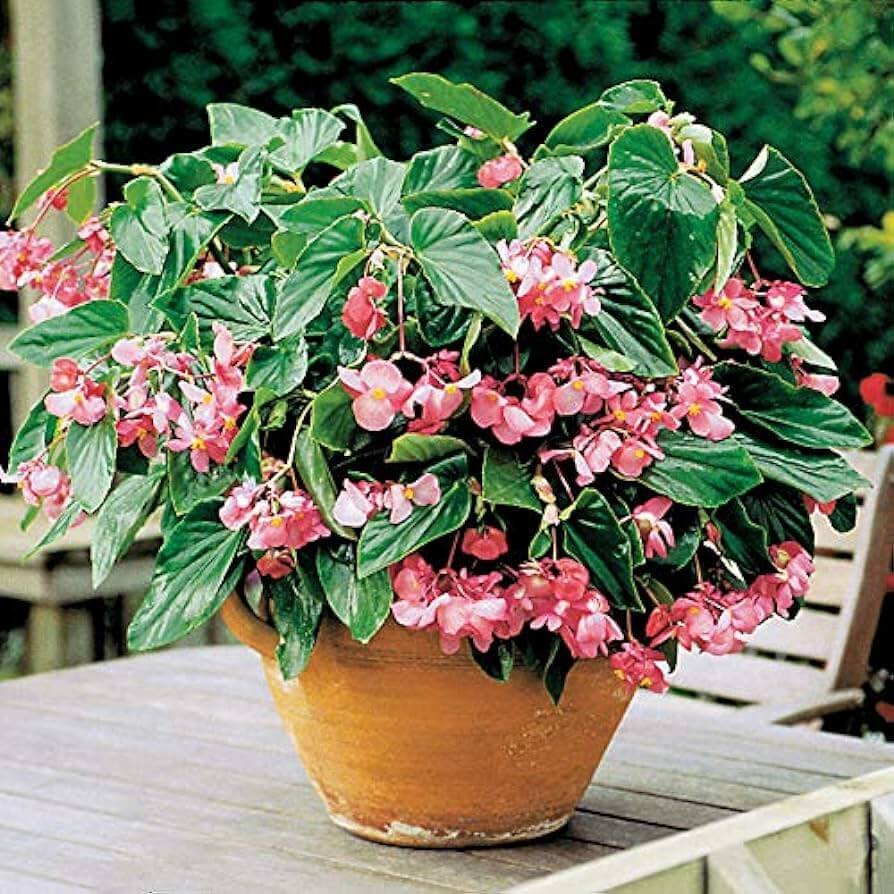
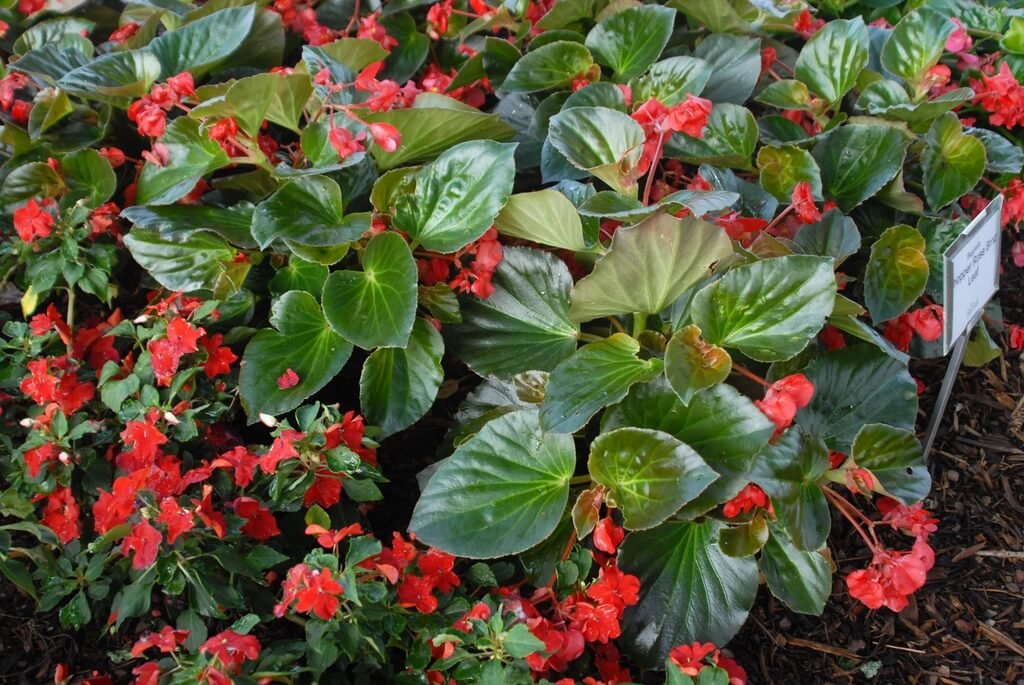
Rhizomatous Begonias
Rhizomatous Begonias, known for their thick horizontal stems (rhizomes), offer a diverse array of foliage shapes and colors. Varieties like Begonia rhizomatous and ‘Tiger Kitten’ showcase unique patterns. Ideal for indoor cultivation, these begonias add an exotic touch with their captivating leaves.
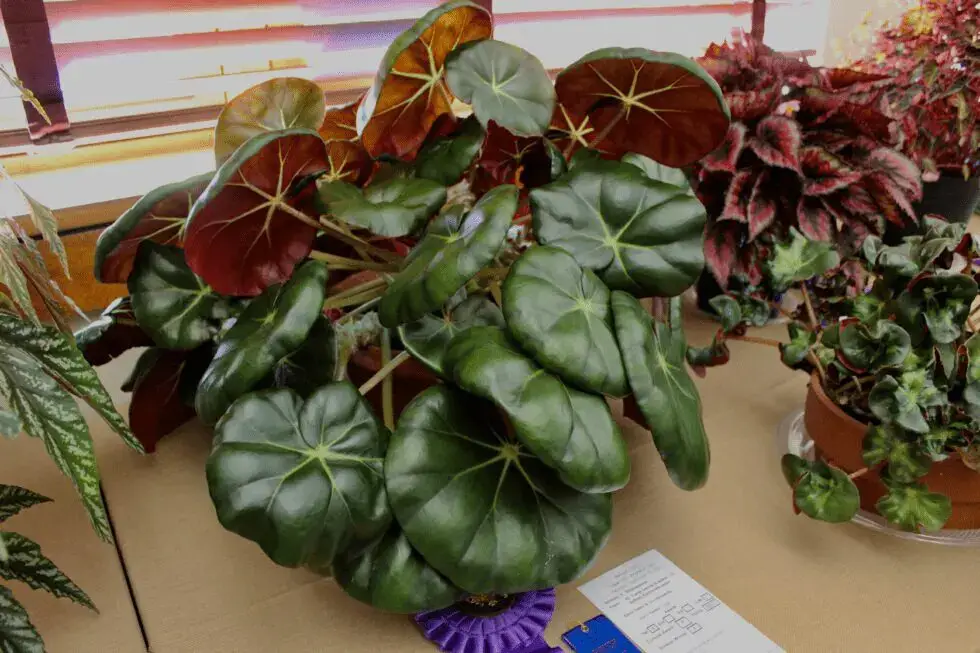
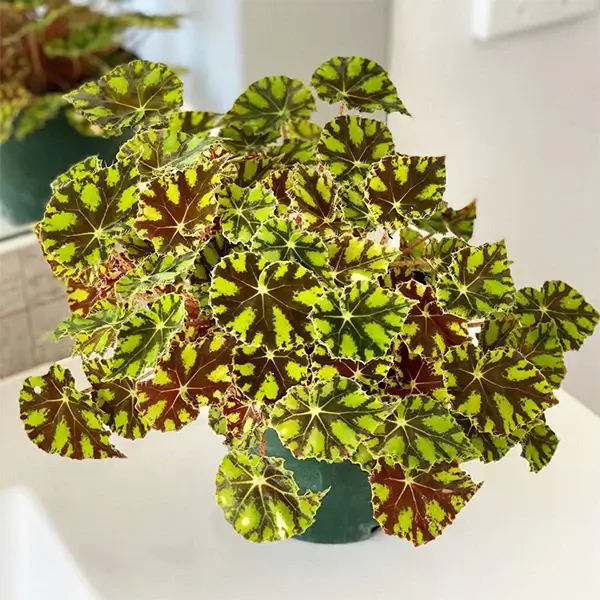
Shrub-like Begonias
Shrub-like Begonias, such as Begonia fuchsioides and ‘Gryphon,’ exhibit a bushy growth habit and may produce clusters of small, delicate flowers. With their compact form, these begonias add a touch of elegance to gardens and containers.
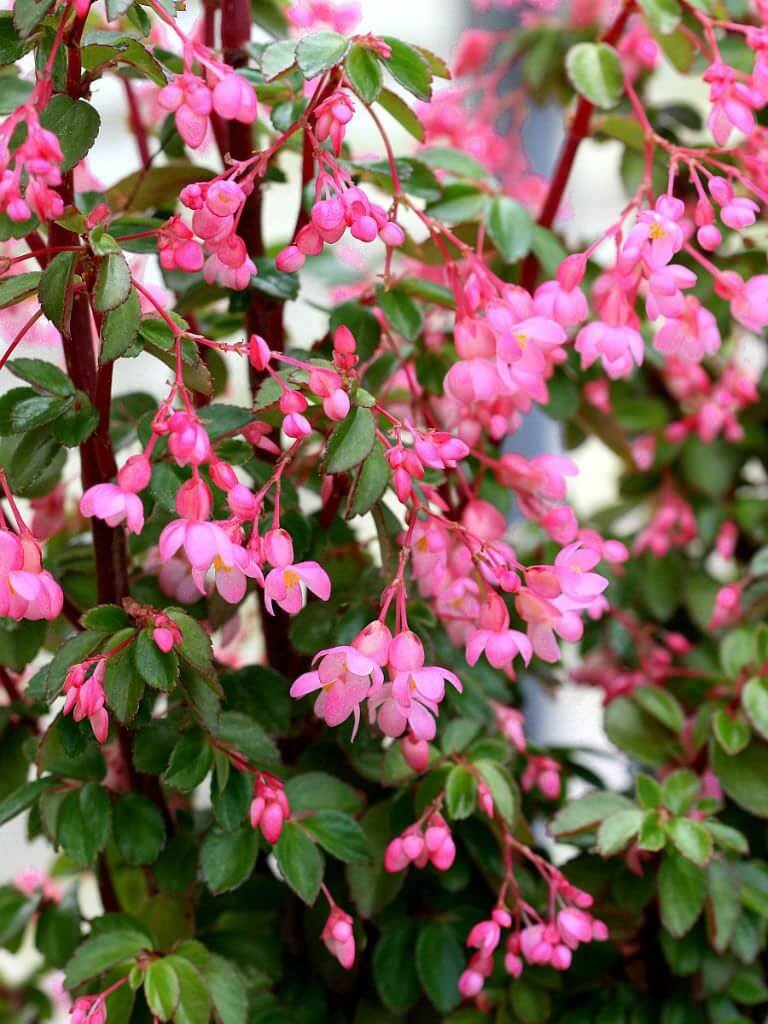
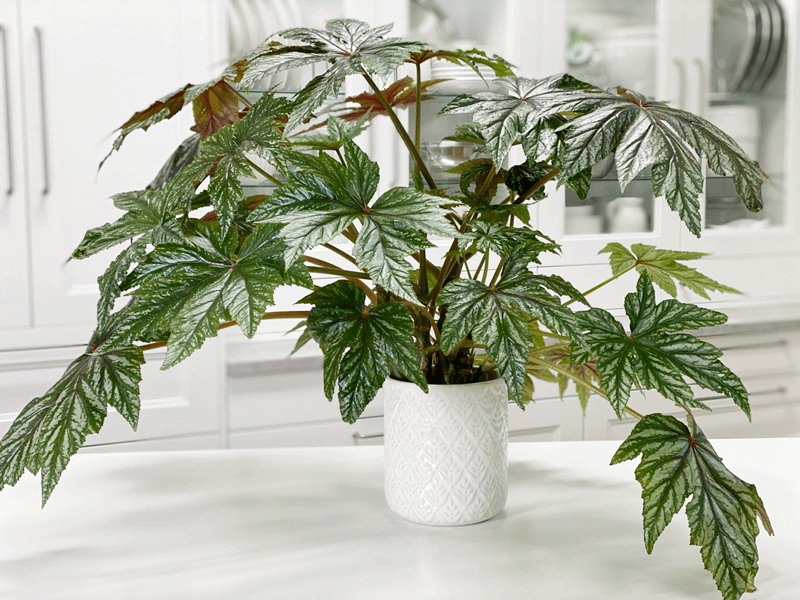
Semperflorens or Wax Begonias
Semperflorens or Wax Begonias, recognized for their continuous blooming, are compact plants with waxy leaves. Varieties like Begonia semperflorens-cultorum and ‘Big’ are popular for bedding and containers. Thriving in well-draining soil, they offer vibrant flowers in shades of red, pink, and white.
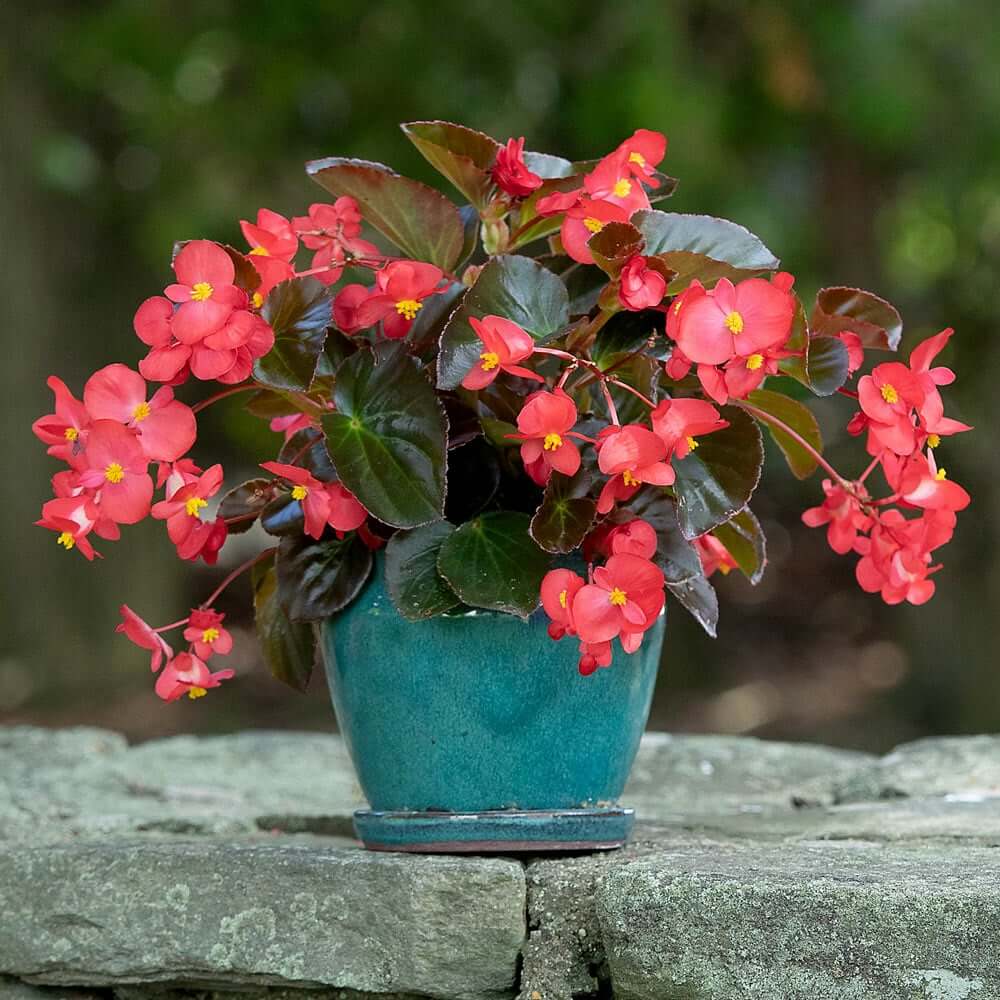
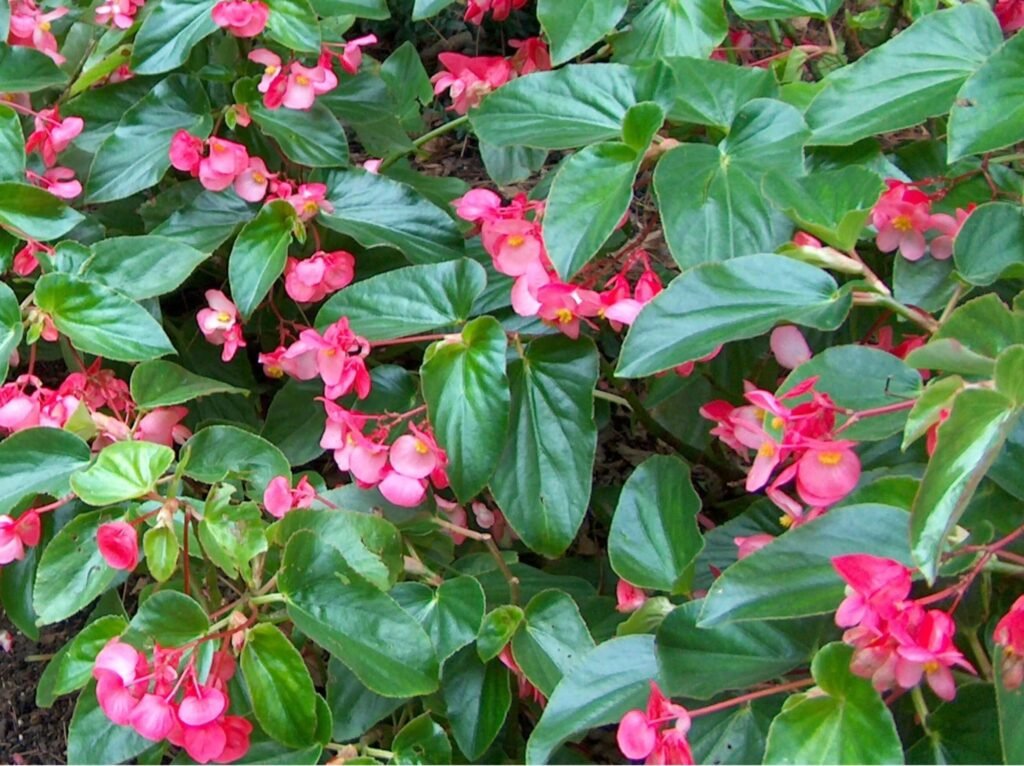
Trailing or Scandent Begonias
Trailing or Scandent Begonias, including Begonia boliviensis and ‘Waterfall,’ feature a cascading growth habit, perfect for hanging baskets. With their graceful trailing stems, these begonias add a dynamic element to gardens and indoor spaces.
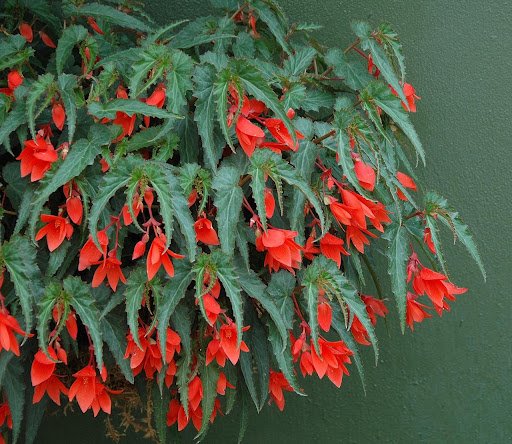
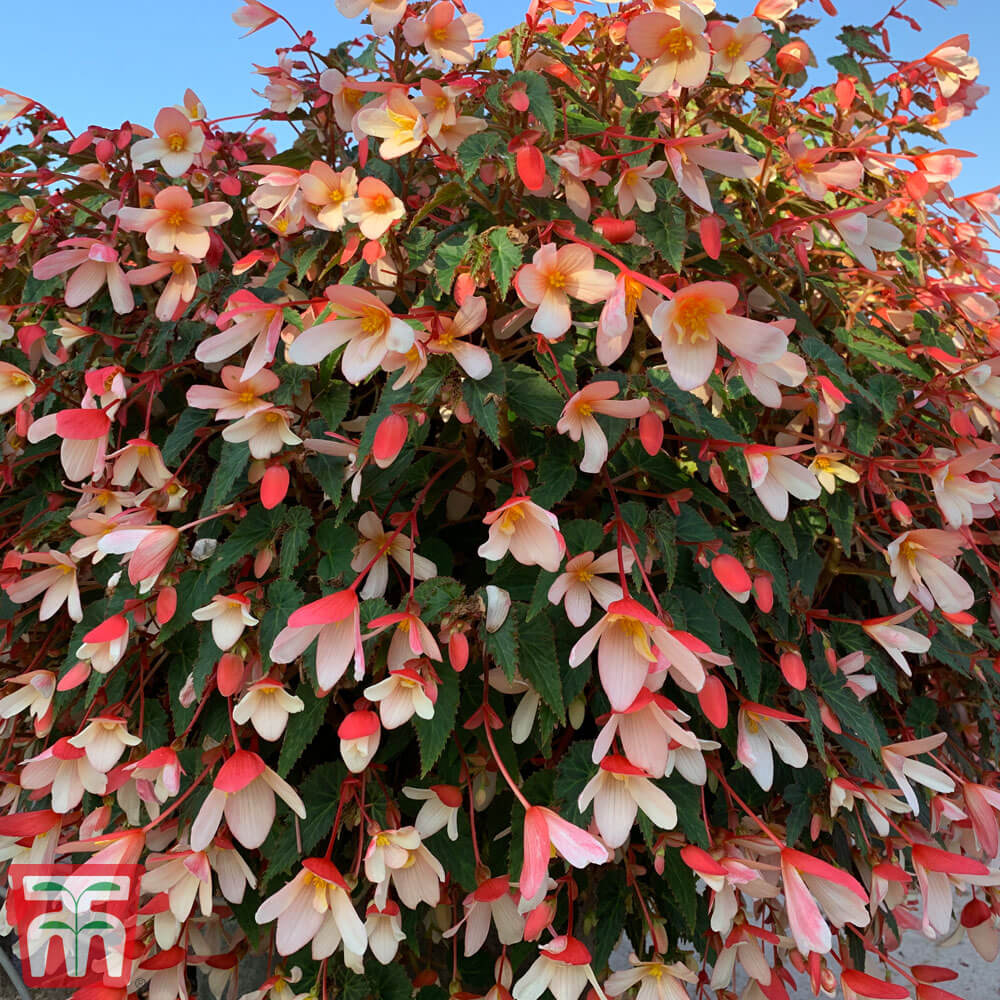
Cane-like Begonias
Cane-like Begonias, exemplified by Begonia maculata (Polka Dot Begonia) and ‘Angel Wing,’ boast tall, cane-like stems and striking foliage. Known for their angel-wing-shaped leaves, these begonias add an element of sophistication to gardens and indoor settings.
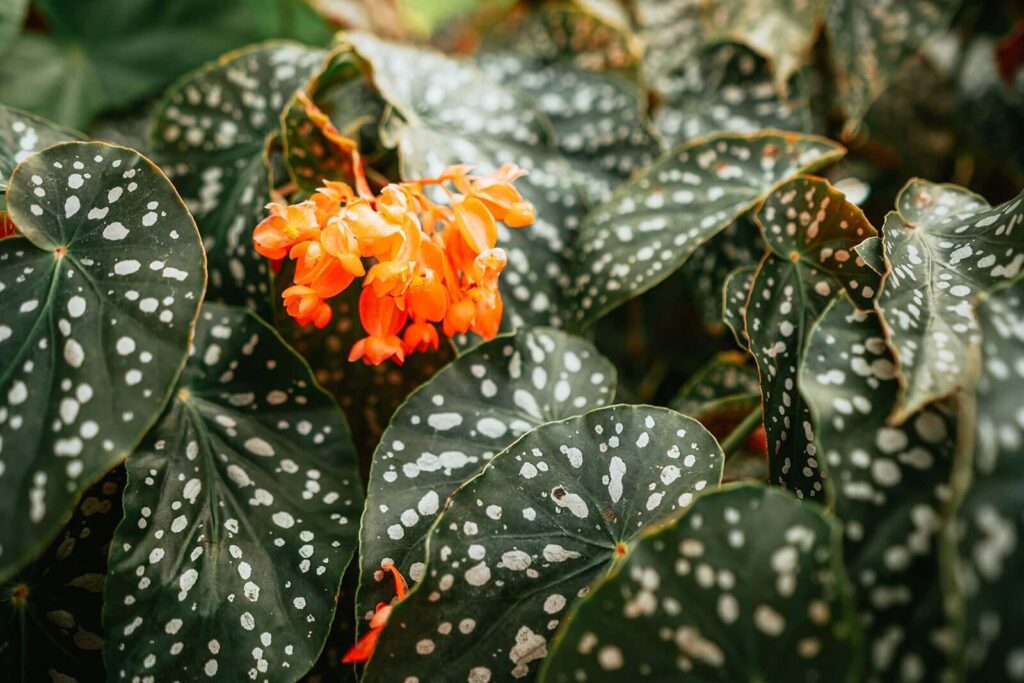
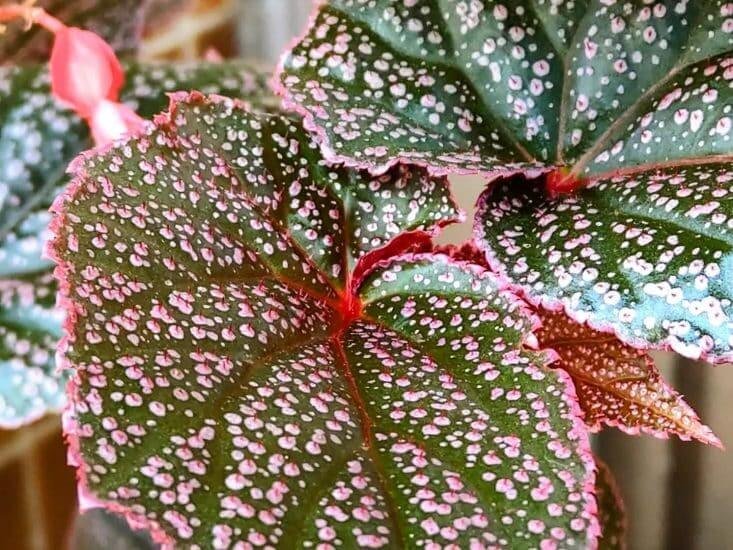
Tropical Begonias
Tropical Begonias bring a touch of the exotic to gardens, featuring bold foliage and sometimes showy flowers. Varieties like Begonia bowerae and Begonia dregei thrive in warm climates. These begonias add lush, tropical vibes to outdoor landscapes and indoor spaces.
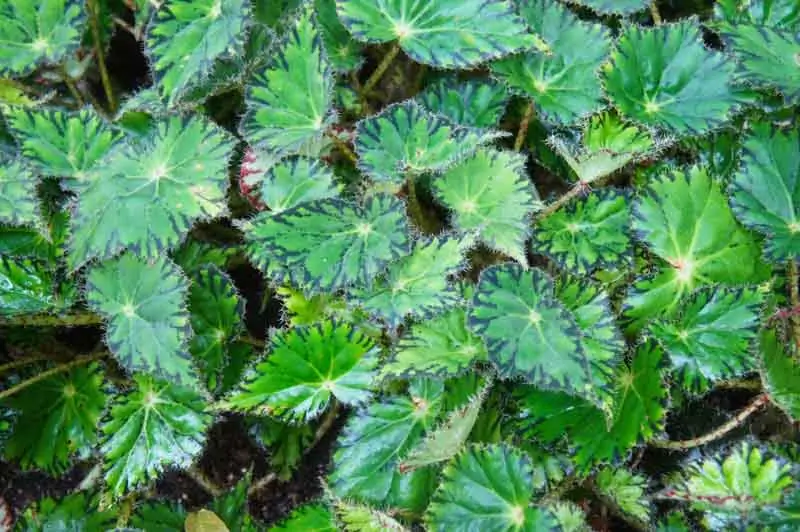
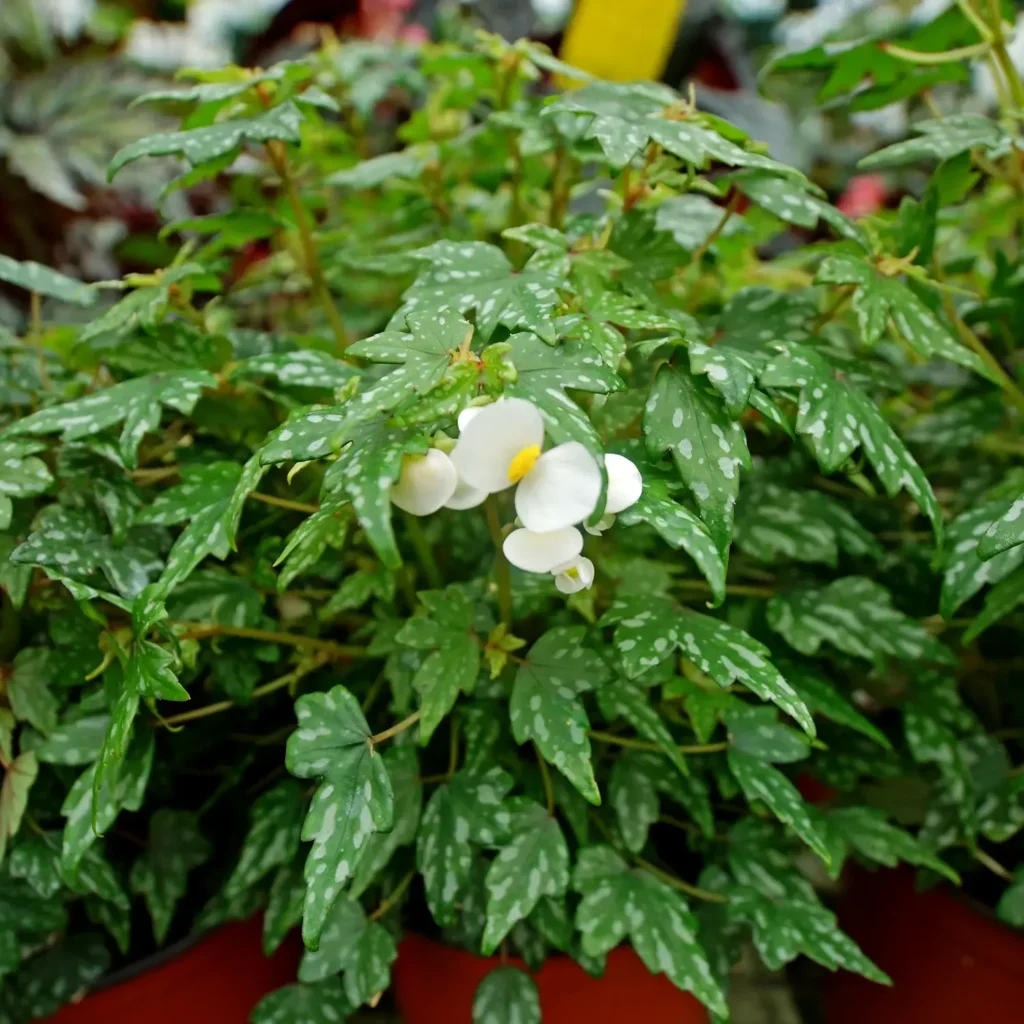
It’s important to note that within each type, there are numerous species, hybrids, and cultivars, each with its unique characteristics. Begonias come in various sizes, shapes, and colors, making them a diverse and versatile group of plants. For enthusiasts eager to learn how to grow specific varieties like Begonia Maculata successfully, it’s essential to explore comprehensive information.
To delve into the world of begonia cultivation, including valuable tips on how to grow Begonia Maculata, enthusiasts are encouraged to consult reputable nurseries, botanical gardens, and horticultural references. Understanding the specific care requirements, such as lighting, humidity, and soil conditions, plays a crucial role in nurturing healthy and vibrant begonias. Whether you’re a seasoned gardener or a novice plant enthusiast, gaining insights into how to grow Begonia Maculata can contribute to a rewarding and thriving indoor garden.
Begonia Maculata Care Guide
Soil Selection
For successful growth, provide moist and nutrient-rich soil for the Polka Dot Begonia. Whether grown in containers or indoors, a suitable potting mix or sandy loam is recommended. Ensure adequate drainage, and enhance it by incorporating perlite into the soil.
Lighting Preferences
Discovering how to grow Begonia maculata begins with understanding its light preferences. Polka Dot Begonias thrive in partial sunlight, with the ideal setting being indirect sunlight indoors near a window. Periodically relocating the plant is advisable to adjust to shifting sunlight angles, especially during winter when daylight hours are shorter.
Watering Practices
Avoid overwatering your begonia by allowing the top 1/2 inch of soil to dry before each watering. The frequency, typically no more than twice a week, may vary based on home humidity levels. Check the soil before watering to gauge the appropriate amount.
Temperature and Humidity Management
The journey of how to grow Begonia Maculata becomes a harmonious blend of mimicking its native tropical habitat by maintaining temperatures between 65 and 70 degrees Fahrenheit. Steer clear of temperatures below 60 degrees, which can lead to wilting. Maintain a steady humidity level of 45 to 50 percent, achievable by using a humidifier or placing the plant in or near the bathroom or kitchen. Monitor for potential issues related to excessive humidity, such as mildew or fungal rot.
Fertilization Techniques
Revitalize the blooms of your Polka Dot Begonia with a slow-release liquid fertilizer in a 10-10-10 formula during spring. Apply this every two to three weeks to enhance blooms as needed.
Pruning Polka Dot Begonia
This is a skillful technique to learn how to grow Begonia maculata, ensuring a well-shaped and healthy plant. Pruning is a crucial aspect of caring for your Polka Dot Begonia to prevent it from becoming overly leggy or overgrown. The optimal time for pruning is late autumn or after a blooming period when the flowers begin to drop off and fade. To maintain the plant’s shape and health, use sharp, small snips to make clean cuts. Regular pruning contributes to a more compact and aesthetically pleasing appearance, promoting the overall well-being of your Polka Dot Begonia.
Propagating Begonia Maculata
Propagating Begonia Maculata is a rewarding process that involves small cuttings. Optimal timing for propagation is when the plant has fewer flowers, typically in late winter.
- Clean Cut Technique: Make a clean cut from the plant using scissors. Some gardeners recommend applying a bit of ground cinnamon to the cut spot to facilitate healing and prevent disease.
- Water Propagation: Place the stem cutting (not the leaf) in a glass container with filtered water, positioning it in an area with bright yet indirect light. Change the water every three to five days. Patience is key, as roots may take several weeks to two months to develop.
- Potting the Rooted Cutting: Once roots have formed, plant the rooted cutting in a container with a well-draining potting mix. Water the plant when the soil becomes dry, following the same care routine as a mature Begonia.
Propagating Begonia Maculata allows you to expand your collection and share the beauty of this plant with others. With care and patience, you can successfully cultivate new Begonia Maculata plants from cuttings.
Potting and Repotting Begonia Maculata
Potting and repotting are essential practices in how to grow Begonia Maculata, supporting its ongoing health and vitality. Follow these steps, ideally in early spring before the active growing season.
- Timing for Transplant: Choose early spring for transplanting, allowing the plant to benefit from optimal conditions during the growing season.
- Assessing Readiness: Repot when the soil no longer feels loose in the current container. This ensures the plant is ready for a larger space and fresh soil.
- Gentle Soil Removal: Gently shake off the old soil from the roots when transferring to a larger container. This process prevents unnecessary stress on the plant.
- Refreshing Potting Soil: As part of the repotting process, refresh the potting soil. Ensure the new mix is well-draining and provides the necessary nutrients for continued growth.
By incorporating these potting and repotting practices, you can support the ongoing development of your Begonia Maculata, creating an environment conducive to its flourishing and ornamental beauty.
Common Pests & Plant Diseases
Begonia Maculata, while generally resilient, can face challenges from certain pests and diseases. Stay vigilant and take proactive measures for a healthy plant.
Pests
Begonia Maculata exhibits a degree of vulnerability to pests such as spider mites, whiteflies, and mealybugs. To counteract these potential infestations, consider the use of insecticidal soaps or gently run a cotton swab saturated with rubbing alcohol over the leaves. Additionally, minimizing the risk of unwanted pests and diseases can be achieved by periodically refreshing the soil. This proactive approach contributes to the overall health and resilience of the plant, ensuring a thriving environment for Begonia Maculata.
Diseases
Addressing fungal ailments like powdery mildew involves the application of fungicides, with neem oil proving effective. On the other hand, bacterial diseases, notably leaf rot, can seize the plant when bacteria infiltrate stems and other plant parts. Prioritize hygiene by consistently sanitizing your hands and gardening tools during interactions with the plant. A critical measure to thwart the spread of infections is the prompt disposal of affected plant parts. Addressing common problems promptly is an integral part of how to grow Begonia Maculata successfully. These practices not only safeguard the Begonia Maculata from potential diseases but also contribute to its overall well-being.
Conclusion
In the realm of indoor gardening, Begonia Maculata emerges as a captivating gem, known for its polka-dotted foliage and exquisite charm. Understanding the nuances of how to grow Begonia Maculata elevates the experience of cultivating this delicate beauty. Unveiling the secrets of how to grow Begonia Maculata involves a careful orchestration of factors. From providing the ideal light conditions near windows to ensuring a well-draining potting mix, every step contributes to the plant’s vitality and allure. As you navigate the intricacies of its care, the reward is a flourishing Begonia Maculata gracing your indoor space.
Amidst the lush greenery and unique patterns of its leaves, challenges may arise. Swift identification and application of appropriate measures become paramount, ensuring the resilience and longevity of your Begonia Maculata. In essence, the journey of cultivating Begonia Maculata is an artful exploration. By embracing the guidelines on how to grow Begonia Maculata, you unlock the full potential of this botanical masterpiece, creating a space where its elegance and vibrancy can truly thrive.
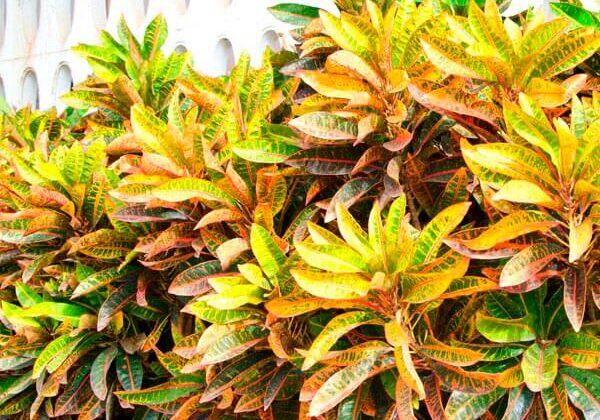
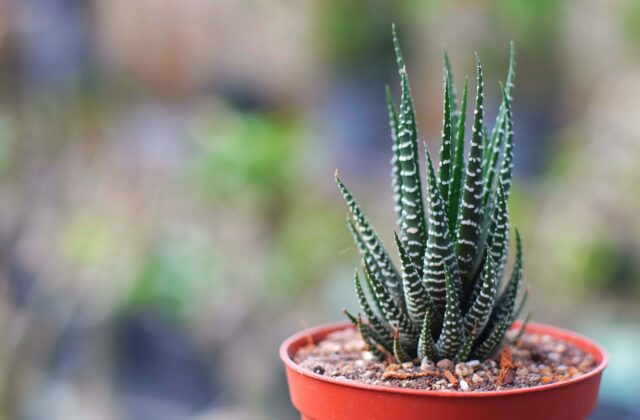
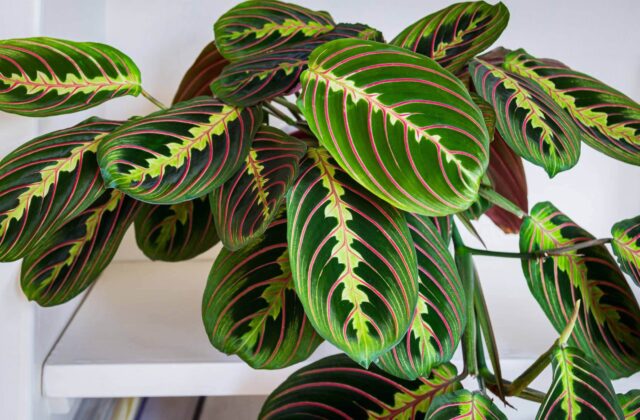
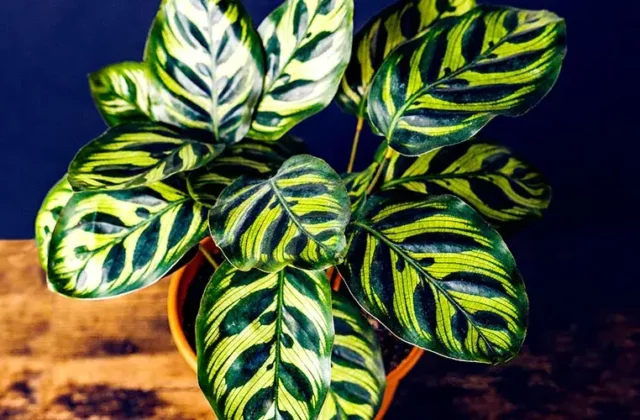
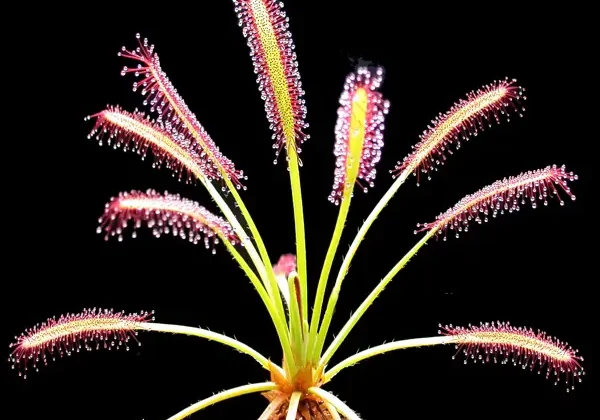
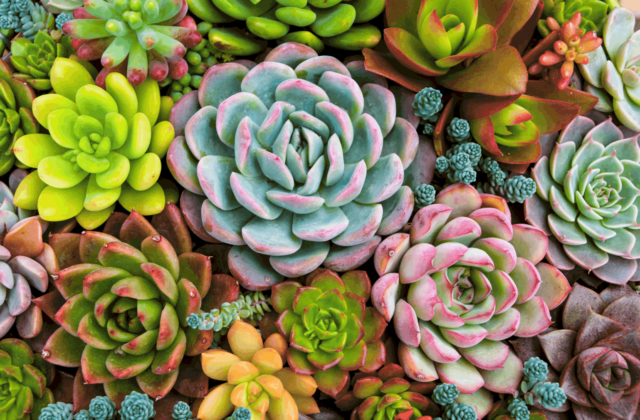
12 comments
We’re a grroup of volunyeers and starting a neew scheme in our community.
Your website offered uus wigh valuable info to work on. You’ve done a formidable job and our entire
community will be thankgul to you. https://www.Waste-ndc.pro/community/profile/tressa79906983/
We’re a group of volunteers and starting a new scheme in our community.
Your website offered us with valuable inbfo to work on. You’ve
done a formidable job and our entire community will be thankful to you. https://www.Waste-ndc.pro/community/profile/tressa79906983/
Nice read, I just passed this onto a friend who was doing some research on that. And he actually bought me lunch as I found it for him smile So let me rephrase that: Thanks for lunch!
As a Newbie, I am permanently exploring online for articles that can aid me. Thank you
seafoods are great because they are really tasty, i think that almost all seafoods are super duper tasty,
After study a number of the blog articles on your own site now, we truly such as your technique of blogging I bookmarked it to my bookmark web site list and you will be checking back soon Pls check out my website at the same time and tell me if you agree
Thanks for sharing. I read many of your blog posts, cool, your blog is very good. https://accounts.binance.com/en/register-person?ref=DB40ITMB
Thank you for your sharing. I am worried that I lack creative ideas. It is your article that makes me full of hope. Thank you. But, I have a question, can you help me?
Currently it looks like WordPress is the
top blogging platform available right now. (from what I’ve
read) Is that what you are using on your blog?
Thanks for sharing. I read many of your blog posts, cool, your blog is very good.
Your article helped me a lot, is there any more related content? Thanks!
Thanks for sharing. I read many of your blog posts, cool, your blog is very good.